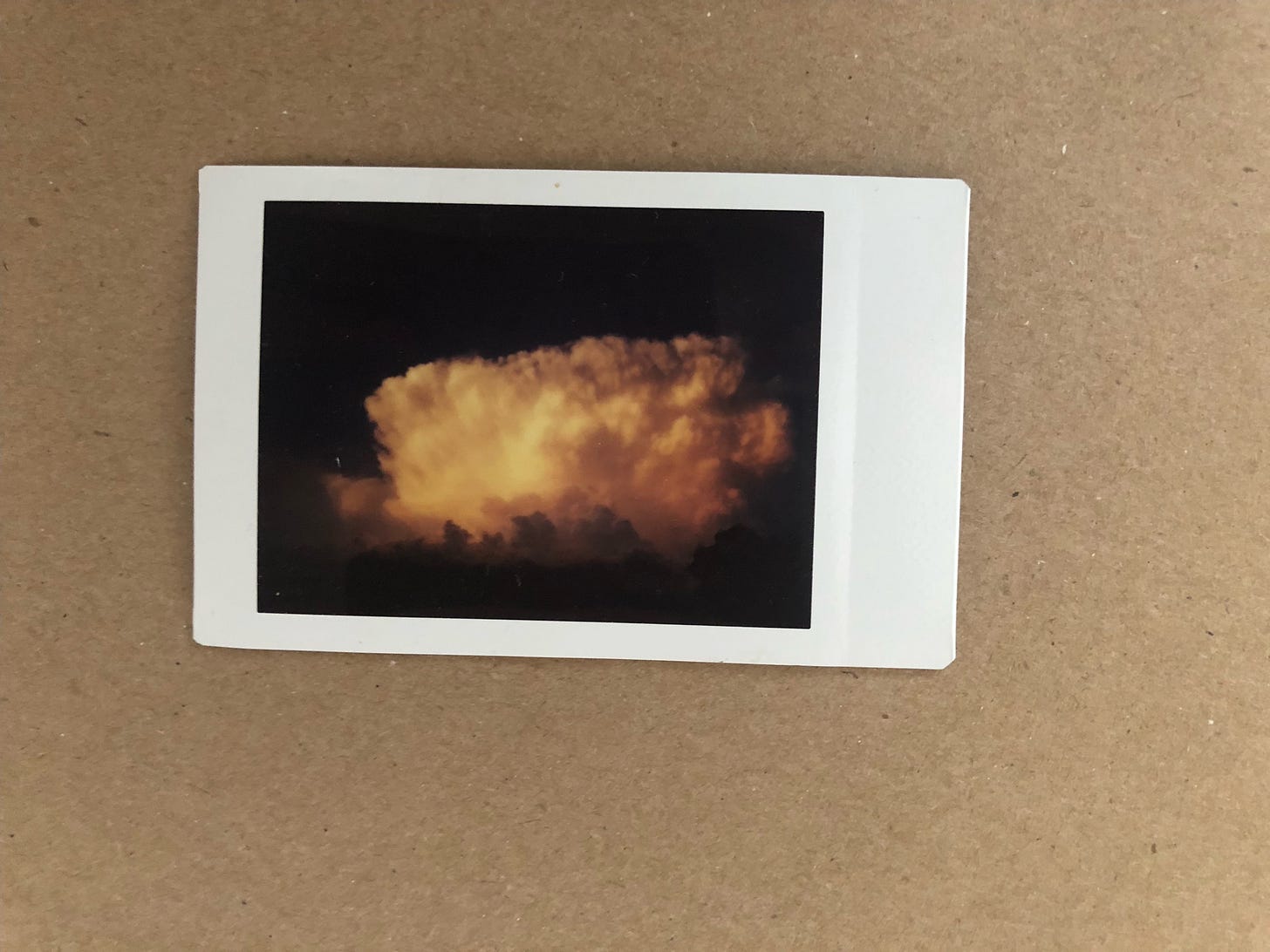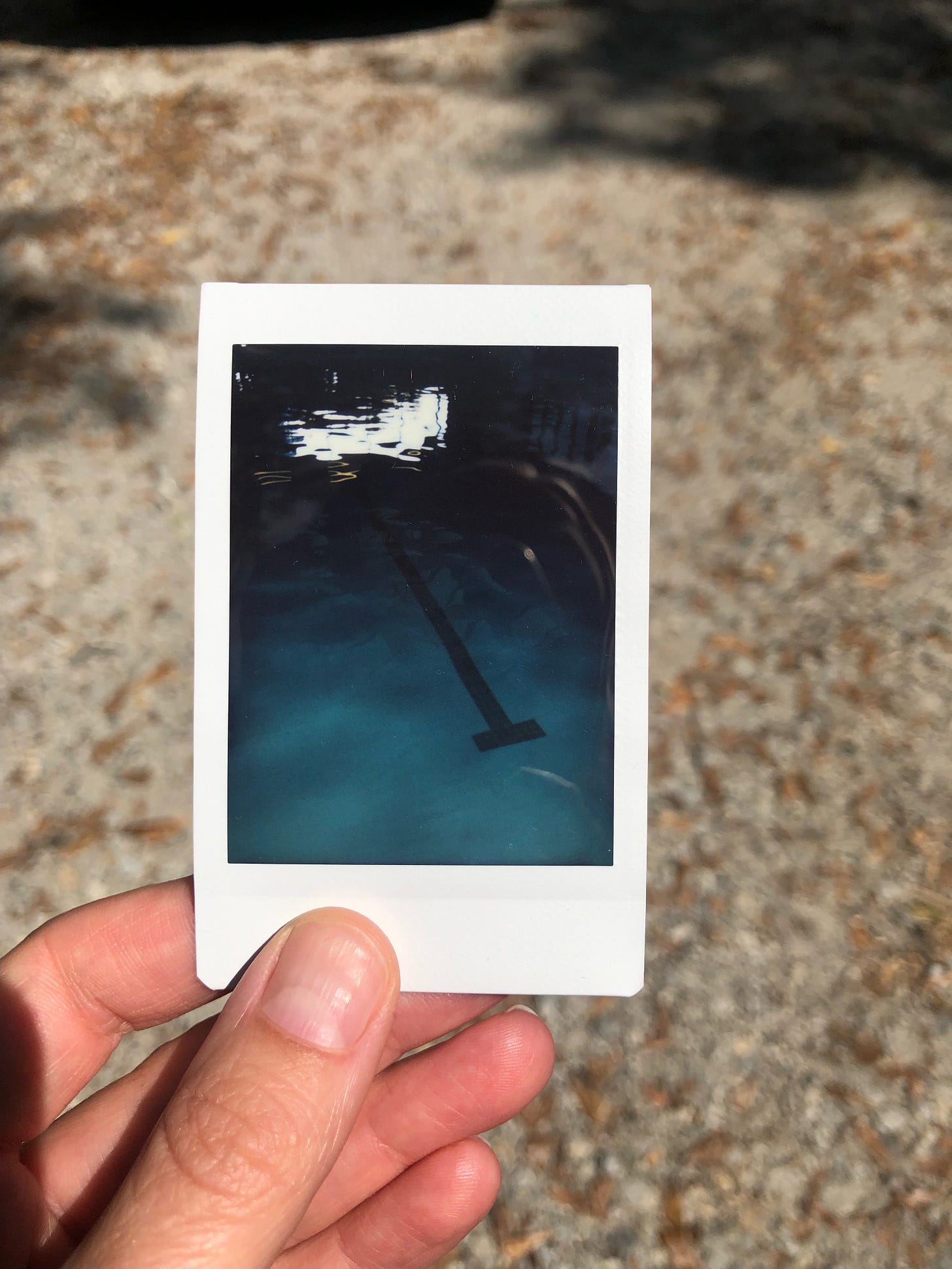Stack of books
from the archive of my Instax film collection
This week, I took a stack of photography books from my house to my studio. It felt necessary to sort like w/ like. Photo books in the studio. Simple.
I’ve hung onto the texts On Photography, by Susan Sontag, Why People Photograph, by Robert Adams, First Exposures by Steffen Siegal. These core texts in the world of photography. And the canon at the time I first studied the medium.
“At our best and most fortunate we make pictures because of what stands in front of the camera, to honor what is greater and more interesting than we are. We never accomplish this perfectly, though in return we ar given something perfect–a sense of inclusion. Our subject thus redefines us, and s part of the biography by which we want to be known.”
-Robert Adam, Why People Photograph
When I was a professor these last few years, I thought about the core texts I received as an education. I always wanted to expand the texts and voices who contribute to the lexicon of the medium of photography. Our language about photography is coupled with the medium of photography and an understanding of framing. Not just how the photographer composes the physical scene before them into the viewfinder, but the question of what the photography is looking at…and why.
I flipped through Adams’ book and found my handwriting in the margins. Red dots at the beginning and end of a paragraph that seemed to reach out to me. I turned the pages looking for these messages to my present self.
What then is also now.

Art is by nature self-explanatory.
-Robert Adams, Why People Photograph
In this exercise of looking in the past, I realize it’s a similar function of flipping through my archive of Instax images. I’m revisiting the thing in front of me that caught my attention, an underline in life.
In Steffen Siegel’s First Exposures, the text is a reprinting of some of the scientific and government reports on how the medium of photography developed and to who would benefit from this technology. Already in the early years of the Daguerrotype tinkering, patents were thought to be useless because photography was developed as method, using (rather) accessible chemistry. Photography was a process invented rather than a machine itself. While learning the technique and being able to account of environmental influences, was discussed in scientific journals and reports to royalty. “It is no exaggeration to say that the method at which M. Daguerre has finally arrived gives commendable results. But it is unfortunate for this accomplished artist that his method would be impossible to patent. As soon as it becomes known, the whole world will be able to use it, and the most inept amateur will make views as accurately as an experienced draftsman,” Letter on discovery, Dominique Francois Arago, 1859.
What I find fascinating in the early discussions about photography is equating of the process with the result. The result, seemingly a copy of the world, which the process of being open to anyone with the means to tinker in a lightless lab.
~~~~~~~~~~~~~~~~~~~~~~~~~~~~~~~~~~~~~~
Beginning on the full mooning Virgo, October 09, my newest body of work Closure Everyday, will be revealed. Closure Everyday is a daily climate change ritual I began on the summer solstice. Subscribers to this newsletter will be a sneak peak on October 9th of the work, and weekly studio insights.
~~~~~~~~~~~~~~~~~~~~~~~~~~~~~~~~~~~~~~
Moment Making List:
Open windows to let in the crispness of autumn.
During the Atlanta Celebrates Photography hosted conversation between Tabitha Soren and Darius Himes, Soren mentioned the book: Magic & Loss by Virginia Heffernan. I ordered it from Bookshop.
Filling up the bird feeders in our yard.
Make photos, make care,
Stephanie




